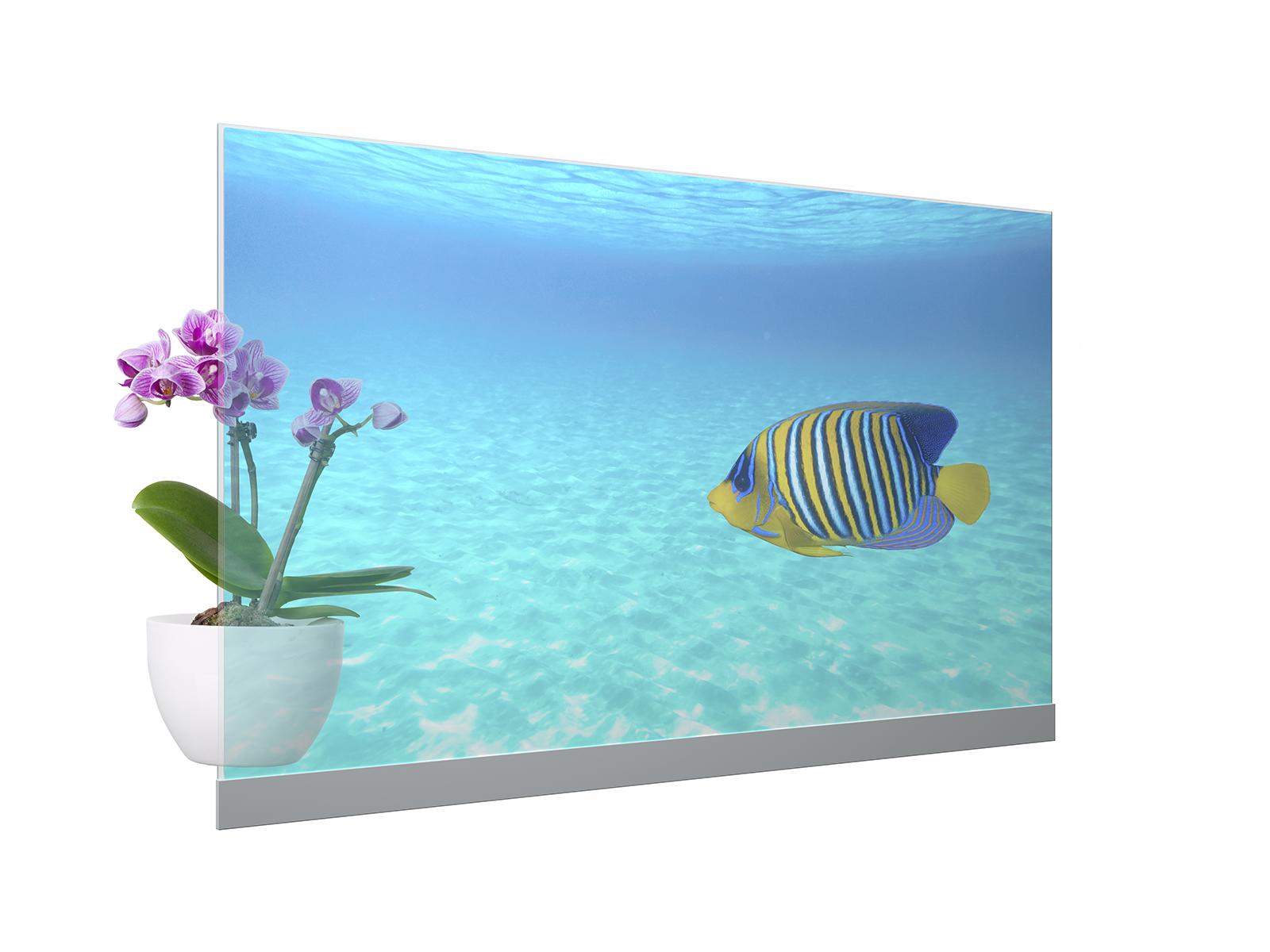CLEAR LED PANELS—regarded as an exciting new technology by some when they first debuted, and a gimmick by others—are rapidly entering the digital signage mainstream.
In fact, transparent LEDs may be a game changer. “”They are ideal for places where you want to be able to see through the screen, such as airports, restaurants, churches, building lobbies, sports venues, expos, and retail spaces,”” says Corey Kirkendoll, president and CEO of 5K Technical Services, a Plano, Texas, managed services provider. “”It opens the door to all sorts of possibilities,”” he notes.
Transparent LED technology essentially creates a glass poster, curtain, or window. When the unit is switched off or isn’t displaying images, it looks like a plain sheet of glass. When it’s on, it displays images that rival a traditional LED or OLED screen. Images appear to float magically in the air. Some units now exceed 90% transparency with a brightness level of 5,000 nits plus.
Analyst firm Technavio projects that the transparent digital signage industry will grow to $4.61 billion by 2025, at a compound annual growth rate of 31%. Already, LG Electronics, Sony, Samsung Electronics, and Panasonic, along with several smaller firms such as AU Optronics, Barco NV, and ClearLED, sell lightweight transparent LED screens. (Image above is the Panasonic Transparent OLED Display Module.)
Transparent LEDs typically cost about 10 times the price of an LED or OLED display of the same size. A small unit may run hundreds of dollars while a large, more complex display may cost hundreds of thousands of dollars or more. However, prices are dropping, and transparent LEDs typically require about 30% less energy than other screens.
Units range from about 14 inches to upwards of 60, and some screens are flexible and suitable for outdoor use. This makes it possible to put screens in new and unconventional places. For instance, groups of screens are sometimes placed behind windows on high-rise buildings to project images and messages outwards at night. Units can also be hung from ceilings, connect to floor and table surfaces, and be used in other creative ways, says Jon Dodge, chief operating officer for Freshwater Digital, a Grand Rapids, Mich., managed services firm that specializes in digital signage. “”It’s possible to tell a story but also see the products and other items behind the display,”” he explains.
Use cases include retailers that install a transparent LED display on the outward-facing window of a store to create eye-catching graphics or promote a sale. “”It can display different products or brands on different days or even change based on the time of day,”” Kirkendoll points out. A restaurant can create a digital menu and a museum might use augmented reality to overlay actual objects.
Screening Methods
While it may be early for some buyers, Dodge says channel pros should consider offering transparent LED screens as part of a broad portfolio of products. “”It makes an impression and puts the concept on their radar,”” he observes. He adds that units are relatively simple to install, use nonproprietary software, and adapt to different uses and environments fairly easily.
For now, the biggest challenges involve unit placement and hiding circuitry that’s needed to operate the system. Kirkendoll cautions that screens must be placed in areas where they aren’t at risk of being bumped or damaged. And as with other types of LED technology, static images can burn into the display. “”It’s important to understand how to use the technology so that a unit isn’t damaged,”” Dodge says.
Programming the units can also be tricky, Kirkendoll points out. “”You really have to understand the physical space, what you want to present, and what it will look like.”” Still, he and others are optimistic about the future of transparent LEDs. “”The ability to have a display that changes dynamically and shows logos and information is remarkable.””
Image courtesy of Panasonic













